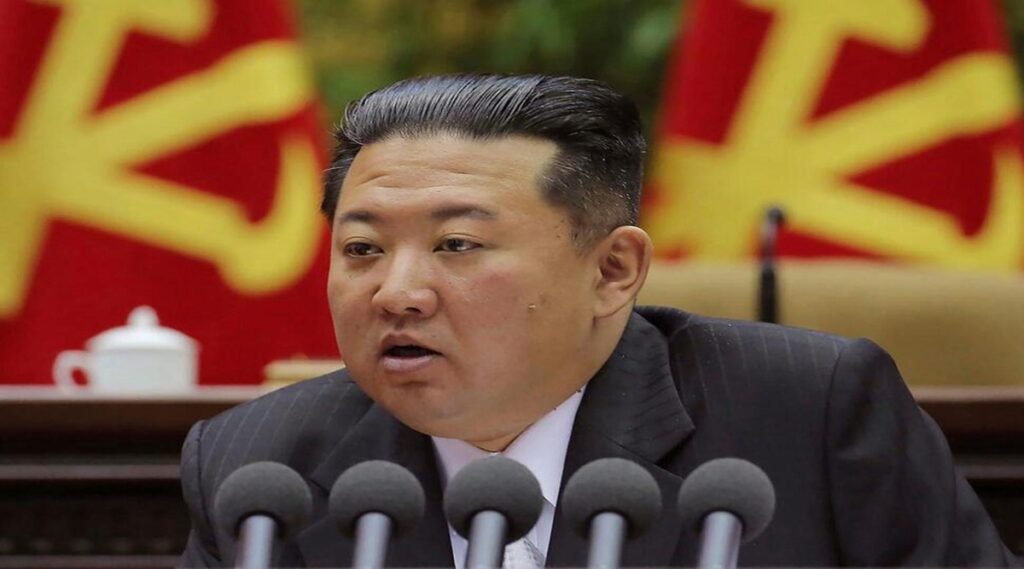North Korean missile exploded in air in failed launch

North Korean missile exploded in air in failed launch.
SEOUL, TGO: A North Korean missile fired from its capital region exploded soon after its liftoff in an apparent failed weapons launch on Wednesday, South Korea’s military said, amid speculation that the North has been preparing to launch its longest-range missile in its most significant provocation in years.
Details of the missile explosion weren’t immediately known. But the launch, the 10th of its kind this year, shows North Korea is determined to press ahead on its push to modernize its weapons arsenal and pressure its rivals into making concessions amid dormant denuclearization talks.
The North Korean missile blew up while it was flying at an altitude of less than 20 kilometers (12.4 miles), a South Korean military official said requesting anonymity because he wasn’t publicly authorized to speak to media on the issue. He said the cause of the explosion wasn’t known.
South Korea’s Joint Chiefs of Staff earlier said in a statement that the launch made from the Pyongyang region around 9:30 a.m. (0030 GMT) apparently failed.
The U.S. Indo-Pacific Command later said that North Korea fired a ballistic missile but didn’t say whether it was a failed launch. A command statement said the launch didn’t pose an immediate threat to U.S. territory and its allies but called on North Korea to refrain from further destabilizing acts.
Japanese Chief Cabinet Secretary Hirokazu Matsuno told reporters that a flight of a ballistic missile has not been confirmed and that Tokyo is working with Washington and Seoul to further analyze what happened.
Experts say past failures still have moved North Korea closer to its goal of acquiring a viable nuclear arsenal that could threaten the American homeland. Of eight “Musudan” intermediate-range missiles tests in 2016, only one of those launches was seen by outside analysts as successful, which led to debates of whether North Korea’s path toward ICBMs had been cut off.
However, the North in 2017 flew more powerful intermediate-range missiles over Japan and conducted three successful test-flights of ICBMs that demonstrated a potential range to strike deep into the U.S. mainland.
North Korea’s successful satellite launches in 2012 and 2016 — which were viewed by the U.N. as disguised tests of its long-range missile technology — also followed repeated failures.
The U.S. and South Korean militaries said last week that North Korea had tested an ICBM system in two recent launches, referring to the developmental Hwasong-17 missile, the North’s biggest weapon, which it unveiled during a military parade in October 2020.
In the two recent launches on Feb. 27 and March 5, the North Korean missiles flew medium-range distances, and experts have said North Korea could eventually perform a full-range ICBM test.
It wasn’t clear if Wednesday’s launch also involved a Hwasong-17 system. If it was an attempt for a full-range Hwasong-17 launch, North Korean leader Kim Jong Un would likely have been at the launch site to observe it.
Earlier Wednesday, North Korea’s state news agency released photos of a smiling Kim, clad in a long black leather coat, visiting a towering apartment complex under construction on the outskirts of Pyongyang. The news agency didn’t say when Kim was there, but it typically reports on his public activities one or two days after they occur.
After its two previous launches, North Korea said it had tested cameras and other systems for a spy satellite and released what it said were photos taken from space during one of the two tests, but it didn’t confirm what rocket or missile it launched.
Observers say North Korea aims to boost its ICBM capability while trying to place its first functioning spy satellite into orbit. Kim has vowed to acquire an improved ICBM and a spy satellite among an array of sophisticated weapons systems he says his country needs to cope with what he calls American hostility.
The Hwasong-17 could potentially fly up to 15,000 kilometers (9,320 miles), far enough to strike anywhere in the U.S. and beyond. The 25-meter (82-foot) missile, which was shown again at a defense exhibition in Pyongyang last year, has yet to be test-launched.


